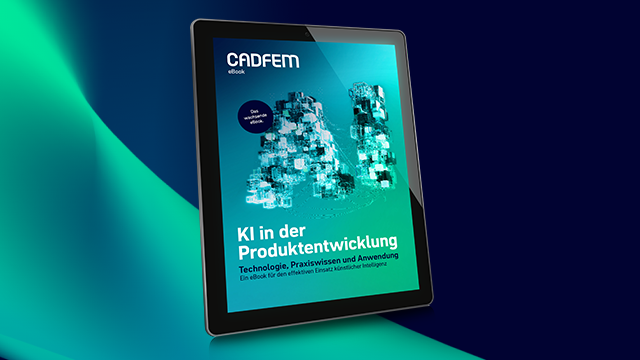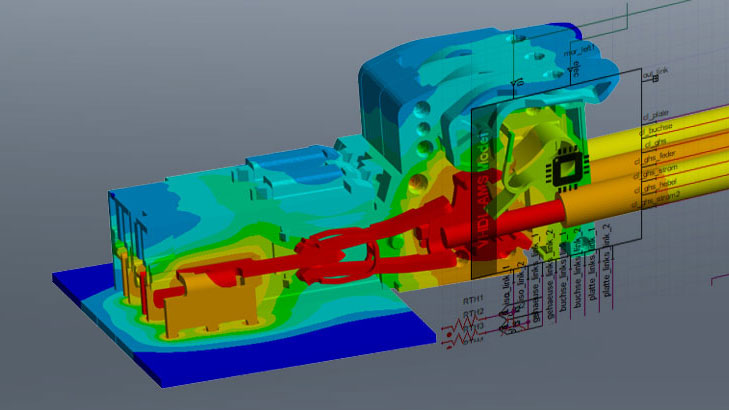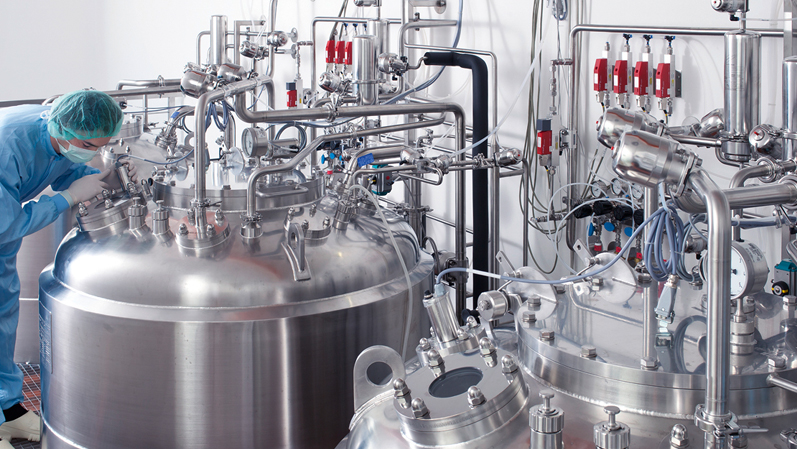AI and Implementation Strategies, Data Security and Open Source Alternatives
Alexander Kunz
20.05.2025
Artificial intelligence and Simulation in Small and Medium-Sized Enterprises
The STOCHOS AI solution has many features that make it interesting for SMEs. Thanks to its simple operation, STOCHOS can also be used locally, without large data sets or experts. Simulation engineers can thus generate reliable results themselves.
In this interview, Kevin Cremanns, the man behind STOCHOS, provides insights into the introduction and use of AI in simulation, data security and the difference compared to open source solutions. We talk to him about the possibilities of the AI solution STOCHOS, which is aimed specifically at SMEs.
Kevin, what makes your solution stand out?
The special thing about STOCHOS is that it produces good results with comparatively little data. This makes STOCHOS interesting for the engineering sector and for SMEs, where data is often not widely available. It also does not require an expensive cloud - everything runs locally. Last but not least, it has been shown that STOCHOS can also be used without expert AI knowledge.
In other words, SMEs can already use AI solutions, right?
Yes, because in general, AI doesn't really differentiate between SMEs and large companies. Corporations tend to have better data collection and processing and are therefore more likely to be considered “AI-ready”. However, SMEs also have data that can be used by AI, such as simulation data.
How do simulation engineers benefit from your AI?
One main application is the acceleration of simulations. This means that after a few calculation runs, the simulation model can be replaced by an AI model. Modified simulations with altered geometries or process parameters for comparison or optimization purposes become much faster, and our AI has recently been able to actively develop geometries. The range of use cases is very broad. Where AI is ultimately used in digital engineering depends on the customer and their goals. CADFEM is a good partner when it comes to identifying suitable applications.
TIP: Hype is Good – But Results are Better!
The industry is at a revolutionary turning point: Artificial Intelligence (AI) is no longer a vision of the future but a tangible competitive advantage. But how can this technology be used effectively in product development? Our eBook not only provides answers but also delivers practical knowledge with real value.

Data is elementary for AI implementation. Can you generally say how many data sets are required?
We are asked this question in almost every customer meeting. The answer depends on three key factors:- First, how complex is the pattern I want to train? A highly non-linear flow simulation logically requires more examples than a simple linear task.
- Second, the number of parameters you want to analyze. If I only vary the length, width and height of a component, it is much easier than a turbine blade with 60 parameters.
- And third, it depends on the data quality. Is the data quality high, i.e. deterministic? Or is there noise, which can be the case with test data in particular? Think of material fluctuations, manufacturing tolerances or measurement errors. Many customers want to train the AI with data from simulations and tests. Our solution can do this, which also makes it unique to a certain extent.
And what about data security?
Here too, we are clear: we offer a purely “on-premises” solution because not everyone is prepared to pay for expensive cloud solutions or operate their own clouds. This means that the company is responsible for its own data security, regardless of the AI. The data remains in the company, the AI runs locally.
This means that the data plays a role, but so does the data processing. What are the requirements in terms of data management and database tools?
You at CADFEM are the perfect partner for this, as you will be discussing this with your customers anyway. From the AI side, it doesn't matter whether the data comes from Excel, a JSON file or an SQL database. In the end, it just has to be in a certain format. For us, for example, it's Python. This means that it has to be converted into Python - NumPy, as it is called - which is the standard format for computational data. However, a modern data management system is of course an advantage, in order to track how and when a model was trained, for example.
Many CADFEM customers are already familiar with Minerva, the Ansys solution for simulation process and data management - SPDM for short. But we want to talk about STOCHOS. Why should you rely on STOCHOS and not on one of the many open source solutions such as TensorFlow or PyTorch?
This question is also frequently asked. In theory, any task can also be solved with open source technology. STOCHOS has the advantage that the entire process is highly automated. Integration into the system landscape and user training are also much easier. Speed is therefore one difference, but the quality of the results is another. Over the years, we have put a lot of work into ensuring that the results of STOCHOS are significantly better than those of an open source tool, with less effort. We have succeeded.
Why don't you need AI experts for STOCHOS?
STOCHOS is a tool in which - to put it bluntly - you enter data, press a button and get the model. But a bit of background knowledge doesn't hurt. For example, when it comes to a temperature field, it's better to learn it holistically rather than just the maximum temperature or maximum stress. Why? Because a maximum stress in the component can jump, and this information is lost if the model is not shown the entire temperature field. This is an example of something that a user might not immediately think of. But that's why CADFEM offers an eLearning course on AI.
The combination of eLearning and STOCHOS with the advantages described results in a very low entry barrier for anyone who wants to tackle the topic of AI in simulation, right?
Exactly, because you can build up your own AI expertise step by step and scale it individually. STOCHOS is the tool that allows simulation engineers to use AI themselves to optimize their familiar tasks.
Ansys HFSS
Industry standard for determining the radiation and transmission behavior of high-frequency electromagnetic fields.

AI for Engineers in Simulation and Product Development
Learn about the current AI technologies, emerging trends, and how to apply AI to your simulation tasks.
![ai-for-engineers-in-simulation-and-product-development-21202[1]](https://blog.cadfem.net/hubfs/topics/DE_Corporate%20Newsletter/06-November%202024/ai-for-engineers-in-simulation-and-product-development-21202%5B1%5D.jpg)
Watch the full interview here:




